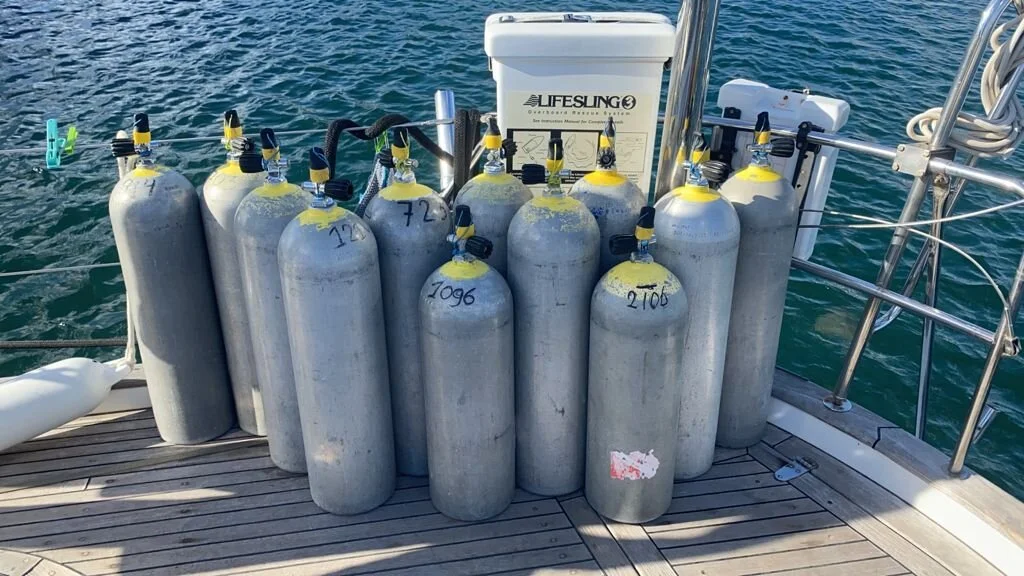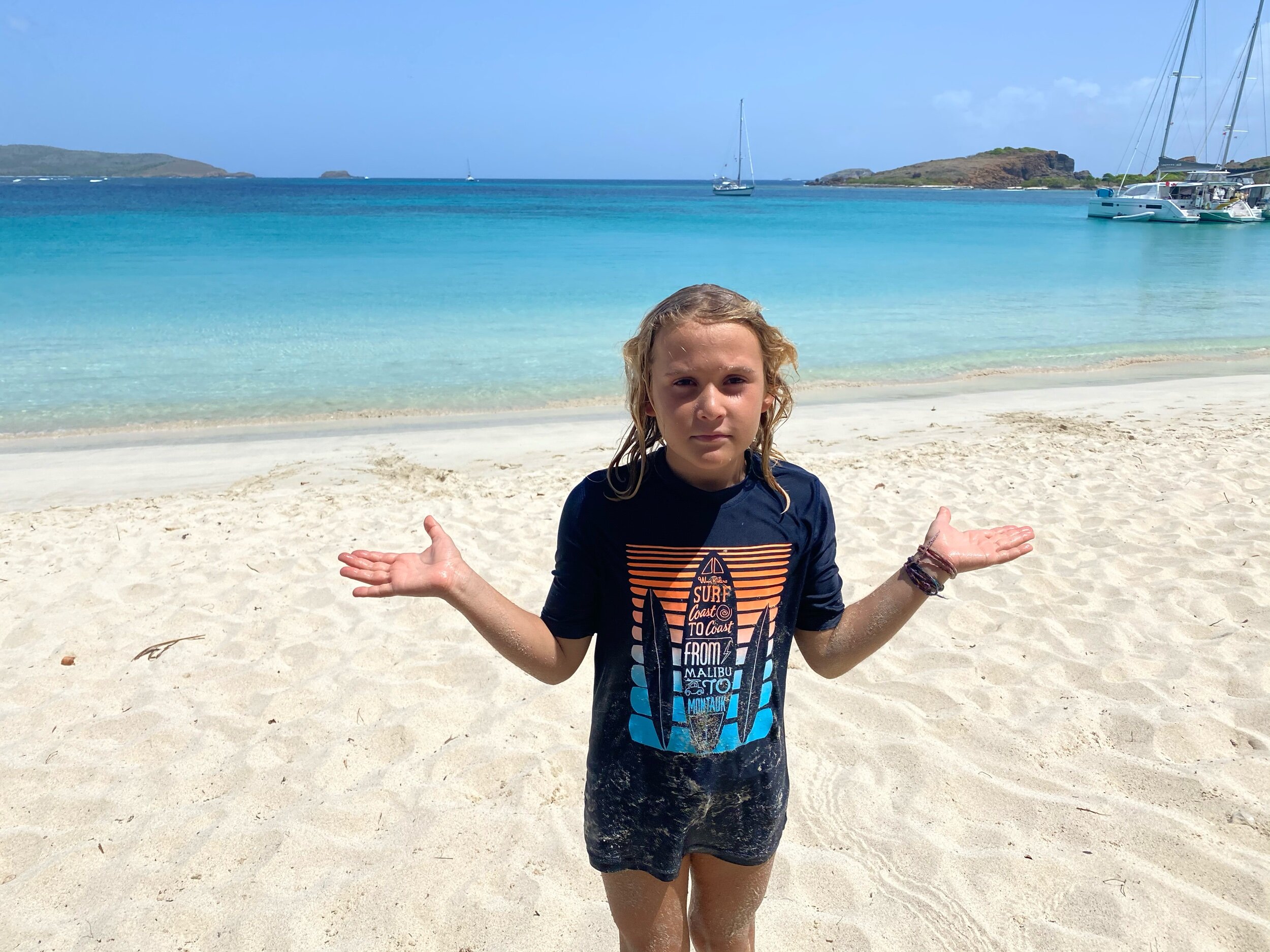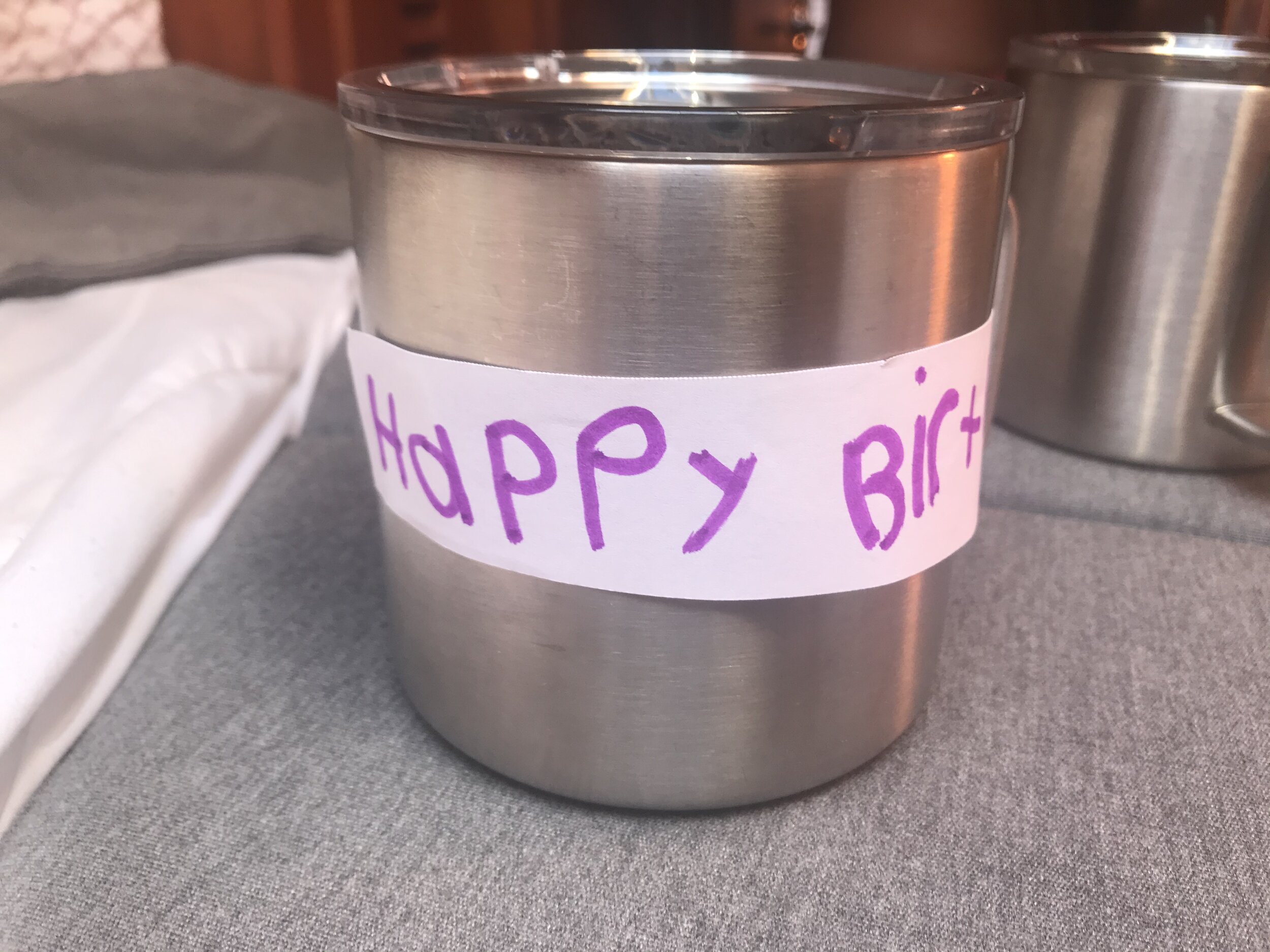That moray is bigger than me!
Scuba diving.
This particular sport is an amazing way to experience underwater life. Snorkelling is another way to see stuff underwater, but it's limiting to how much you can look at. Free diving is a little more flexible in the "what to see department", since you can swim down as long as you can hold your breath. Being on a tank opens up the door to the underwater world.
I first got to try it in Dominica, where a friend, by the name of Harry Pecorelli (a professional diver and underwater archeologist), taught Mom, Dad, and I how to scuba dive. After we rented gear and tanks we got in the water. Celeste, (who is Harry's daughter and is also learning how to dive) and Mom equalized their ears no prob. I had some trouble equalizing going up and down the ladder. So Harry said " all right Liam, let's go for a swim under the boat." We started to swim under Matriarch and all the while I was trying to equalize and putting in so much effort... and succeeding, without even knowing it! All of a sudden Harry rapidly taps my shoulder and I look and he points down and I look down and see... that I was standing on the bottom in twenty feet of water while breathing, looking at Harry's excited face, because I finally equalized my ears.
We swam around going from rock to rock looking at fish and crabs. We turned around and headed back to the boat. As we ascended I looked up and saw Mom, Dad, and Celeste hanging over the back of the transom, waiting. My face broke the surface and before I had my mask off I got the 15 or so questions from them but they soon stoped since they saw the big grin on my face," you did it!" Mom and Dad shouted at the same time.
This is after I managed to equalize my ears and before I got the barrage of questions
After the dive we learned that we had to rinse the gear with freshwater to prevent it from breaking down or corroding and we had to keep it stored in a place that was not exposed to the sun to prevent damage. This was our first dive and we all were very fatigued since we weren’t used to the physical effort needed to swim with all the gear on our backs. Now when we go diving I expect to be tired after, (all that nitrogen I guess). The next day we went diving off the boat in a small area underneath the boat. Over the next weeks in Dominica we did 6 dives. I learned how to shoot lionfish on a tank and saw many cool things. At the end of July we left and continued on our trip and that was the end of scuba for awhile.
Harry is showing us how to build our gear and set it down so it does not fall
Now that we are in Bonaire, one of the most famous place to dive, in the world, so we decided to get PADI certified. To dive at professional places (stuff included, like renting gear and filling tank) you need a certification card, which we did not have.
Getting certified gave me the most rewarding feeling I have ever felt.
The course "all in" (online and in water) took about 5 days, not too long right?
We had to learn all the safety stuff, what to do and what not to do. For the in water part we did 5 confined session (like in a pool but instead it was a roped off section of the ocean which was way better than a pool because fish and other cool sea life would come and go as they pleased) and 4 open water dives (outside of the confined area).
We are getting ready to do out fourth confined water session
This was taken by Mom when we came out for lunch on the second day
While diving we practiced doing skills, like the" no mask swim" and the " I'm out of air" situation. On the last dive we did the CESA which is the emergency ascent to the surface. This was by far the hardest thing in the course. You have to slowly ascend about 20 feet on one breath exhaling the whole time saying “aaahhhhh”…it was hard not to run out of breath.
Now that the course is done we can dive all we want. We have logged about 20 dives now and have seen so many amazing creature, like hawksbill turtles, which are amazing since the are an endangered species and a beautiful animal. The other day we saw two huge, absolutely massive parrot fish (like I’m talking like 3 feet long!), and they are common in the Caribbean but we have never seen them that big before! We have also seen a ton of moray eels, who are a type of saltwater eel that lives in crevasses in the coral and rock. We spotted one that was easily 7 feet long, head to tail, and he was thicker than an average fire extinguisher (maybe 6 or 8 inches wide?).
The family has done a lot of diving and has now a couple of favourites. All the dive sites of this side of the island are awesome and have lots to see. The shelf is just one long reef that surrounds the entire island. The dive sites mark an easier entry point or something special, like a divers memorial or a cave. The sites I’ve dived so far are: site 9 (Karpata), site 20 (Oil Slick Leap), site 25 (Small wall), site 26 (The Cliff), site 27( La Machaca), site 32 (Something Special), site 38 (Bachelors Beach), site 42 (The Lake), and finally site 49 (Salt Pier). All these sites have something that make them unique, The Lake has a huge lake of sand that separate the first and second reef, the Small Wall has a cave, Oil Slick Leap has a platform hanging of a cliff that you jump off into the water, La Machaca is a dive with a ship wreak, and Bachelors Beach is an nice soft sand beach that you walk into the water from (which is nice because most of the entry points are rocky and you need shoes).
By the time we have to leave we are hoping to dive at least half of the ones in this picture.
We took the boat over to Klein Bonaire and went diving on No Name Beach
Someone saw a whale shark about a month ago and I really want to see one! I have never seen one and they are so rare in the Caribbean since they live in the Pacific Ocean. Now it being here raises some question like, “ how did it get here?”, “did it cross the Panama canal?”., I have no idea. For those of you who don’t know what a whale shark is, it’s a massive shark that looks like a whale and feeds on little shrimp and plankton floating in the water column. This amazing creature was spotted of the dive site 30/31 (Bari/Front Porch) in about 30-40 feet of water, not to deep. The family and our friends were siting at a beach bar and were swimming of the beach and the whale shark was like, a couple hundred feet north of us, we could have snorkelled and seen it!
A whale shark like this one was seen of the dive site Bari/Front Porch (this is not my picture: https://images.app.goo.gl/ihHp1LkNpuAAvfN7A)
A couple weeks ago we saw the Ostracods and they were awesome. This animal is a little microscopic shrimp that on the fourth day after the full moon, the males release their sperm into the water and it lights up with and electric blue colour. It looks like a chain of blue fire sinking in the water. We viewed the Ostracods during a night dive and night dives are always scary, because you are on alert and waiting for something to happen, but we were safe. At night all the cool things come out to hunt including: Moray eels, octopus, sharks, and large predatory fish; whilst everyone is sleeping in their little caves and in the coral.
We have had so much fun diving and I hope to continue doing so! ( I still haven't seen a whale shark but am always on the look-out)
Liam














